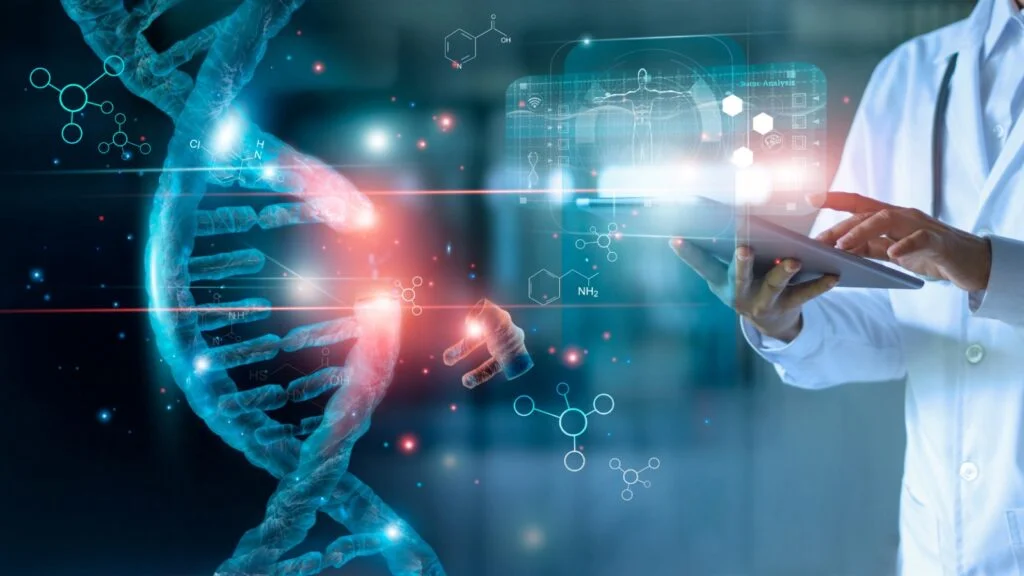In recent years, the intersection of Information Technology (IT) and bioinformatics has emerged as a fertile ground for innovation, offering unprecedented opportunities to revolutionize healthcare, research, and biotechnology. As the volume of biological data continues to grow exponentially, IT’s role in managing, analyzing, and interpreting this data becomes increasingly vital. This blog explores how IT is transforming bioinformatics, highlighting key areas where innovation is driving progress.
The Role of IT in Managing Big Data in Bioinformatics
Bioinformatics, at its core, involves the collection, storage, analysis, and interpretation of biological data. The advent of high-throughput technologies, such as next-generation sequencing, has led to an explosion of data that must be managed efficiently. IT provides the necessary infrastructure and tools to handle this data, from robust databases to cloud computing solutions.
Cloud computing, in particular, has revolutionized bioinformatics by offering scalable resources that can handle vast amounts of data without the need for extensive physical infrastructure. Platforms like Amazon Web Services (AWS) and Google Cloud offer bioinformatics tools that facilitate the storage and analysis of genetic data, enabling researchers to focus on insights rather than data management. These platforms also support collaborative research, allowing scientists from around the world to share and analyze data seamlessly.
Enhancing Data Analysis with Advanced Algorithms and Machine Learning
Beyond data management, IT is driving innovation in bioinformatics through the development of advanced algorithms and machine learning models. These technologies are essential for analyzing complex biological data, such as genomics and proteomics, where traditional statistical methods may fall short.
Machine learning algorithms can identify patterns and relationships in large datasets, leading to new insights into genetic diseases, drug interactions, and evolutionary biology. For instance, deep learning models have been used to predict protein structures with remarkable accuracy, a feat that was once considered unattainable. These advancements not only accelerate research but also open up new avenues for personalized medicine, where treatments can be tailored to an individual’s genetic profile.
IT’s Role in Integrating Multidisciplinary Data
Bioinformatics is inherently interdisciplinary, requiring the integration of data from various fields, including biology, chemistry, medicine, and computer science. IT plays a crucial role in facilitating this integration by providing platforms that can harmonize data from diverse sources.
One example of this integration is the use of bioinformatics in drug discovery. IT systems can combine data from genomics, proteomics, and pharmacology to identify potential drug targets and predict the efficacy of new compounds. This approach not only accelerates the drug discovery process but also reduces the likelihood of adverse effects by considering a broader range of biological factors.
The Future of IT and Bioinformatics: Challenges and Opportunities
As IT continues to advance, the potential for innovation in bioinformatics is vast. However, several challenges must be addressed to fully realize this potential. One of the primary challenges is the need for standardized data formats and protocols that facilitate data sharing and integration across different platforms and institutions.
Another challenge is the ethical considerations surrounding the use of genetic data. As IT enables the collection and analysis of increasingly detailed biological information, concerns about privacy and data security become more pressing. Addressing these challenges will require collaboration between bioinformaticians, IT professionals, and policymakers to develop frameworks that protect individual privacy while promoting scientific progress.
Despite these challenges, the future of IT and bioinformatics is bright. The continued convergence of these fields promises to drive innovations that could transform our understanding of biology and lead to new treatments for a wide range of diseases. As we move forward, it will be essential to foster collaboration between IT professionals and biologists to harness the full potential of this exciting intersection.
Also Read: The Role of IT in Enhancing Sustainability in Manufacturing and Logistics 





